
Related
Guests
- Dr. Romell Madisondentist from New Orleans. His brother Ronald Madison was shot and killed by police on Danziger Bridge five days after the hurricane.
- Rosana Cruzlongtime New Orleans community activist around issues of criminal justice, labor and immigrant rights. She was the Gulf Coast field coordinator for the National Immigration Law Center and also worked with New Orleans Worker Justice Coalition. Cruz is the co-director of Safe Streets, Strong Communities, an organization campaigning for a new criminal justice system in New Orleans.
On the second anniversary of Hurricane Katrina, we take a look back the Danziger Bridge killings. Seven police officers been indicted for opening fire on two African-American families on the Danziger Bridge days after the storm, killing two people and wounding four others. At the time, the official story was that they gunned down snipers. Now the question is why they shot at two families fleeing the flood. [includes rush transcript]
Transcript
AMY GOODMAN: The official story started floating out soon after the hurricane hit that there were snipers on the Danziger Bridge, which connects two neighborhoods flooded by the hurricane, that the police had taken them out and killed some of them. But there were other stories, too, that police had chased down and massacred innocent people fleeing the storm.
Last December, seven police officers were indicted for killing two people walking across the bridge. They were from two families, the Bartholomews and the Madisons. James Brisette, a young man who was a friend of the Bartholomews, was killed by seven bullets in his back and legs. Susan Bartholomew’s arm was partially blown off. Her daughter and husband had three gunshot wounds each. Their trial is ongoing.
Ronald Madison, a forty-year-old mentally disabled man, was one of the two people killed. He was walking across the bridge with his older brother Lance, when, according to police, he was shot in the back and died. Lance was initially arrested and jailed for attempting to murder the police officers. He was later released after a grand jury cleared his name.
Dr. Rommel Madison is the brother of Lance and Ronald Madison. He is a dentist, and he testified this week at the International Tribunal on Hurricane Katrina that was put together by the People’s Hurricane Fund. He joins us now here in the Lower Ninth Ward. We’re also joined by Rosana Cruz, the co-director of Safe Streets, Strong Communities, a grassroots organization focused on transforming the criminal justice system in New Orleans. We welcome you both to Democracy Now!
Romell Madison, you’re former president of the National Dental Association.
DR. ROMELL MADISON: Yes.
AMY GOODMAN: Describe what happened after the hurricane. What happened to your brothers?
DR. ROMELL MADISON: OK. My brothers were seeking help to get to safety on the east side of the Danziger Bridge by officers on the west side, and it hadn’t flooded, so they had refuge there. But they didn’t have food or water, so they would go to the east side, where everyone was being picked up to be brought to safety to the dome and to the Convention Center.
On the day of September 4th, there was a family at the foot of the bridge, a husband, wife, daughter, three small kids and a teenager. During that time they were on the bridge, they noticed a rental truck, a moving van-type-sized truck, about a mid-sized van. It pulled up where the family was. They exited the truck. About seven men exited the truck, and they opened fire on the family at the foot of the bridge. One individual was killed. Everyone was wounded, but one of the children. The children’s ages were from fourteen to nineteen.
After seeing that, they started retreating back to the westbound side of the Danziger Bridge back toward my office again. And at that point the police officers opened fire on them. They wounded my brother Ronald in the back twice. My brother Lance was able to get him to the other side of the bridge and put him on the grass, and then he ran for help. When he did return, he was relieved to find the National Guard and the state police, and he was telling them what happened.
At that point, the police officers walked up, and then they finally disclosed that they were police, because when they originally got out of the van, they were dressed in shorts, T-shirts, just plain shirts. They never identified themselves as being police. And to see them open fire on a small group of individuals, African American individuals, at the foot of the bridge, they just figured they were out to, you know, go hunting and shooting and killing people.
AMY GOODMAN: Where were you at this time?
DR. ROMELL MADISON: OK, I was in Baton Rouge. A lot of the information that I have has been published, and it was broadcasted on TV on the news, on CNN, in the newspaper, where I have pictures that I gave to members at the tribunal so that they could show the shooting incident. A lot of this was caught on the news cameras.
AMY GOODMAN: Explain what happened to your brother Ronald, how Lance described what happened on the bridge.
DR. ROMELL MADISON: OK. At that point, when they were close to the top of the bridge, they were — he was shot in the back twice. And then he was able to carry him over to the bottom of the other side of the bridge.
AMY GOODMAN: They just opened fire on them?
DR. ROMELL MADISON: They just opened fire on them. They didn’t have any guns. At the end of the incident of shooting, there were no guns found on the scene from any other individual. Only ones that had guns were the people that came out of the van. But when my brother did get back to the scene and they arrested him, my other brother Ronald had been shot a second time. This time he was shot in the back five more times. The bullets entered the back and exited the front of his body.
AMY GOODMAN: So he’s laying on the bridge.
DR. ROMELL MADISON: He’s laying on the ground in front of the hotel next to my office. And there’s a truck parked right there. In the picture that I showed, there’s a truck, pickup truck, parked right there. He was stood up in front of that pickup truck and shot in the back five more times. It was shown on CNN. The guy testified, because he witnessed it. He said that they stood him up in front of his truck, and they lined up behind him like a firing squad and shot him again. The bullet holes are in his pickup truck, and all that was shown on CNN. So during this entire period, they’ve never denied shooting him. They were trying to get out of saying that they shot him or that the shooting was first-degree murder. Now, my —
AMY GOODMAN: What was Lance saying at the time?
DR. ROMELL MADISON: Lance was telling them that his brother was injured and needed medical attention. And they totally disregarded any request that he had. They threatened him, cursed him, and told him he’d better shut up. They didn’t — you know, they knew at that point they already had killed my brother Ronald.
AMY GOODMAN: When he approached the guard, what did the police say when they came up behind him?
DR. ROMELL MADISON: The police? Well, the police came from the bridge, from the bridge. My brother met them before my office site, which they kind of like came together. And that’s when the police told the state troopers and the National Guards that “Hold him. He’s under arrest for attempted murder for shooting at the police.” And that’s when they arrested him.
AMY GOODMAN: When they arrested Lance.
DR. ROMELL MADISON: That’s when they arrested Lance, yes.
AMY GOODMAN: The stories we heard as we were in New Orleans was there were snipers on the bridge, and the police had taken them out.
DR. ROMELL MADISON: No. There were no snipers. There were other witnesses that discredited that statement. There were a lot of statements that were discredited. Just all you have to do is follow the news with CNN, and you’ll see, find out what happened.
AMY GOODMAN: And ultimately, the officers were indicted.
DR. ROMELL MADISON: Yeah. Ultimately they were found — they found out the truth through the grand jury investigation, and four of them were indicted for first-degree murder, three of them were indicted for attempted first-degree murder and second-degree murder. The murder charges stem from the killing of both my brother Ronald and James Brisette.
AMY GOODMAN: And James Brisette was the friend of the Bartholomews.
DR. ROMELL MADISON: Yes.
AMY GOODMAN: And describe what you understand at this point happened with them.
DR. ROMELL MADISON: In the description of the medical reports, the mother’s arm was shot off. The daughter —- and she testified on TV on CNN that they were going to shoot her mother again, and she tried to cover her body with her body, and they shot her in the back three times. They shot the father. They shot -—
AMY GOODMAN: Father in the head.
DR. ROMELL MADISON: Yes. And they shot two of the kids. Now, the ages of the kids range from fourteen to the age of nineteen, which was James Brisette. They were young kids. One of them got away and didn’t get shot.
The ambulance brought the family to the hospital. They were treated. Bullets were removed. And they were released. And 'til today, they've never been charged with anything, which — and the judge, at the hearing for my brother’s bail, asked the police about “Why haven’t you charged these people, if you shot them? Otherwise, you just shot them for nothing.” And there was no response to that. They claim they didn’t know where the family was. I knew where the family was. But, you know, they were — I think they were afraid to come back and voice what happened to them at the time, but they have filed suit against the police department.
AMY GOODMAN: Rosana Cruz, you run an organization here in New Orleans, Safe Streets. How does this story fit into what you’ve been seeing since Hurricane Katrina?
ROSANA CRUZ: Safe Streets, Strong Communities is a membership-based organization. Among our membership are families, the Madisons and other families. The way that this fits in is that this is unfortunately just one story that represents many stories of police misconduct. And that’s really putting it lightly.
What we’ve seen since the storm is basically a gross criminalization of people of color that certainly existed before the storm, but was laid bare and really exacerbated during this time of crisis when people turned to the police and law enforcement agencies and officials for help. And this was kind of the experience that many people have had. And so, in the months after the storm, Safe Streets went and collected testimony from different families, their experiences, like Mr. Dean, in terms of being incarcerated, and also the experiences of people who had lost loved ones or themselves experienced police brutality.
AMY GOODMAN: You also deal a great deal with immigrants. When you heard Roderick Dean’s story, the story of being in the Orleans Parish Prison, the water rising above, the stories of immigrants at this time?
ROSANA CRUZ: The immigrant community historically in New Orleans has been a marginalized community, one that was geographically pushed to the edges of the city. And some of the bigger issues that they dealt with was just this complete language barrier and lack of access to information. The city didn’t have any kind of set plan for folks with limited English.
Also, immediately after the storm, what we saw was large numbers of immigrants being brought into the city. In the work that Safe Streets has done in collaboration with other organizations, we’ve seen that both African American communities and Latino communities have experienced this level of criminalization really around work. It’s really interesting that when Orleans Parish Prison was reopened, immediately employers were calling the prison and saying, “We need your guys. We need workers.” And so, the impetus there was to refill that prison as quickly as possible to provide this labor force, which has afforded historically the sheriff a great deal of patronage power. And so, you see African Americans being arrested, funneled into a prison system, being put to work through the sheriff’s program. And then, at the same time, Latino workers being brought in, invited, basically, to come work, recruited to come work here. And meanwhile, law enforcement, particularly Immigration Customs Enforcement, inflated by, I want to say, over 700 new agents in the Gulf Coast. So, immediately behind them, an enforcement agency to criminalize and arrest them.
AMY GOODMAN: What do you think needs to be done now? In the case of your family, the police officers are going on trial, Dr. Madison. Your family has also sued?
DR. ROMELL MADISON: My mother and brother have. But presently, we’re still faced with the uphill fight with the judicial system. OK, when the indictments were handed out to the police on December 28th of ’05, they were allowed to turn themselves in January 2nd of ’06, so that they could have this time to spend with their families.
The second thing that the judge did that I feel was incorrect was that he provided bail for first-degree murder. Nowhere in the United States is anyone provided bail for first-degree murder. These individuals were provided bail. One of the officers quit and was allowed to move to Houston, Texas, to leave the state. And that’s unheard of also. They were supposed to be on house arrest, and they shouldn’t have left — he shouldn’t have gone anywhere.
Third, they were allowed to go back to work as police in the police department, which is really a tragedy to the public. They’ve fired police for second-degree battery, let alone for being charged for first-degree murder, and allowed them to come back to work as police officers.
The last thing is that the violation of the grand jury testimony, too, by giving it to the defense attorneys for the police, to allow them to find out what’s [inaudible] in it and whether it would have a means to try to have the charges dropped against their clients. Now, that is another violation of civil rights injustice, because no one’s allowed to view the grand jury testimony. If that was the case, they could have let the defense attorney decide whether or not they should be charged or not.
Everything has really been the complete opposite of what should be. And finally the judge — there was a motion for the judge to recuse himself. I don’t think just because of this, but because of his air of impropriety that was given in his disclosure. So at this point, that’s what we’re all working on: his recusal from the case and trying to obtain a judge that will deal with everything strictly by the book and fairly.
ROSANA CRUZ: And just to clarify, the judge on this case is a close friend of the police department, has three staff members who have direct family relationships or business relationships with the defense attorneys.
AMY GOODMAN: Well, we will leave it there, but we won’t leave this story alone. We will continue to follow it, even as we leave New Orleans. I want to thank you both for being with us.
DR. ROMELL MADISON: Thank you. I appreciate it.
AMY GOODMAN: Rosana Cruz with Safe Streets, Romell Madison, former president of the National Dental Association, lost his brother Ronald on the Danziger Bridge just after the hurricane hit. Two police officers — seven police officers are now charged with murder in his and another case.

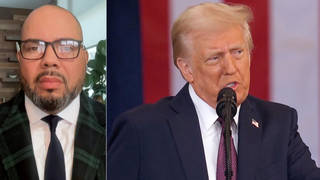
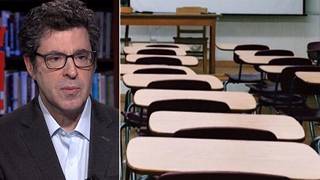
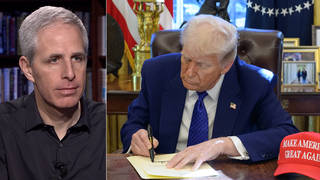
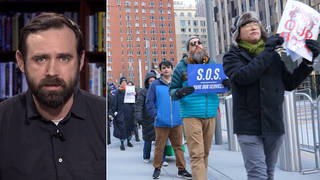

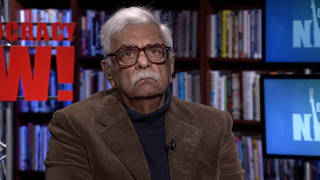
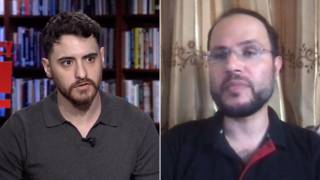
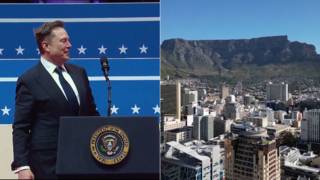

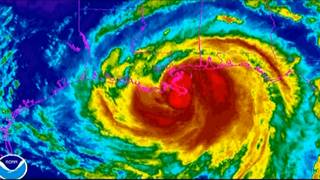
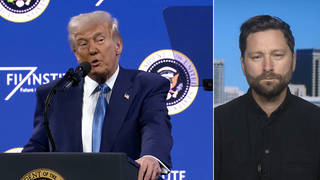
Media Options